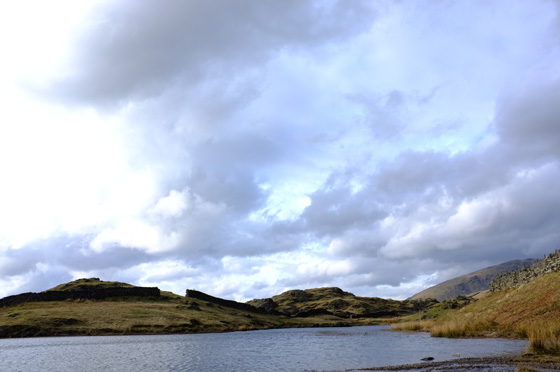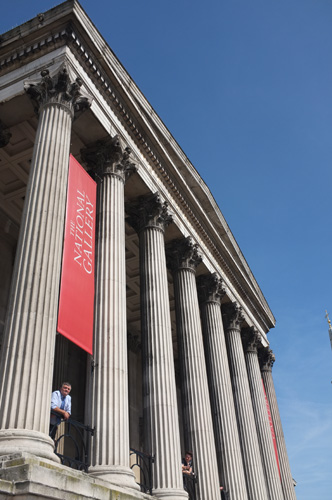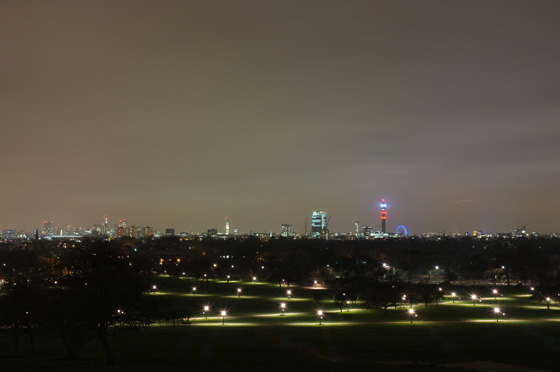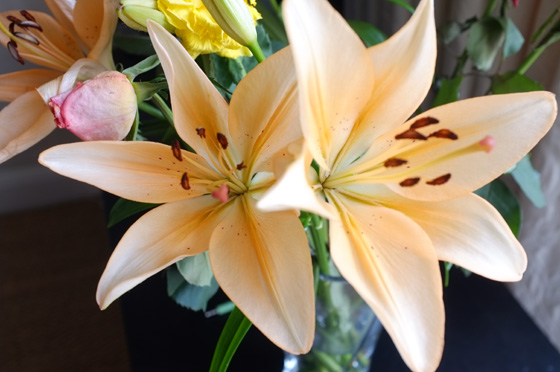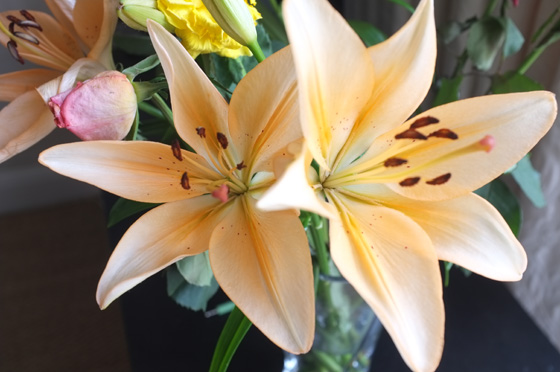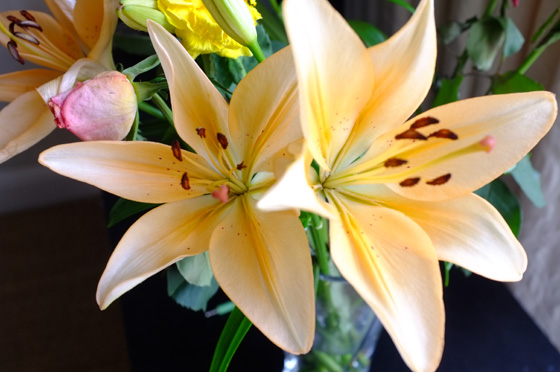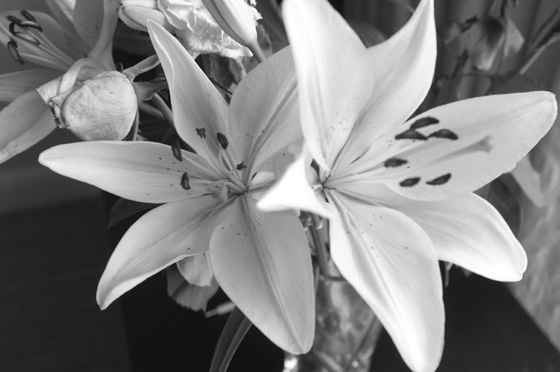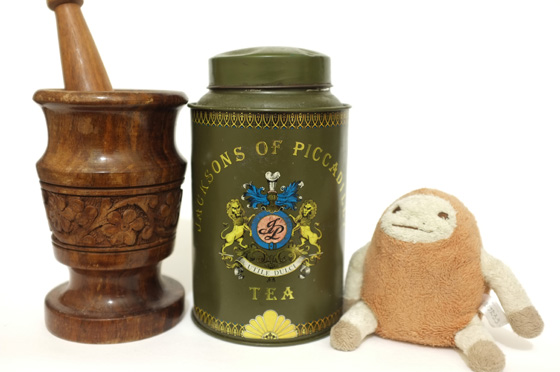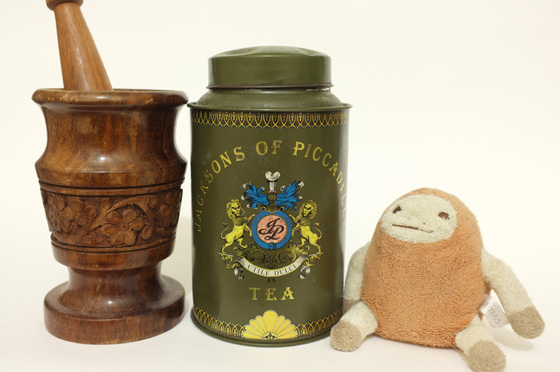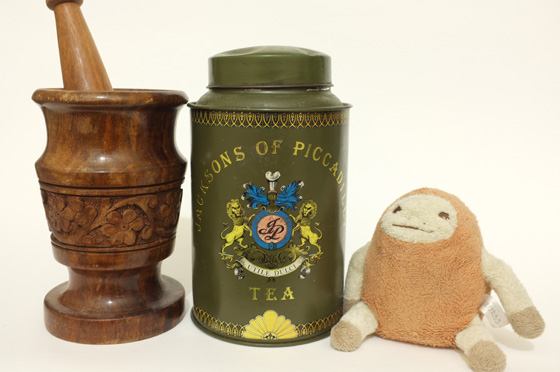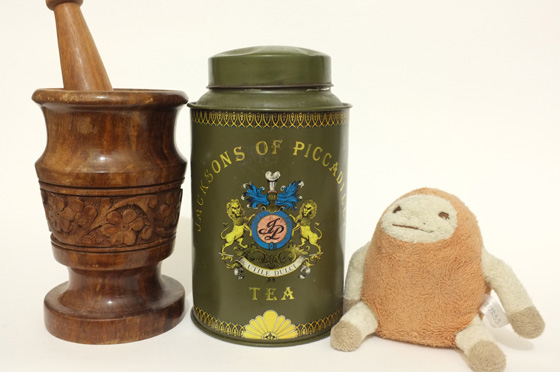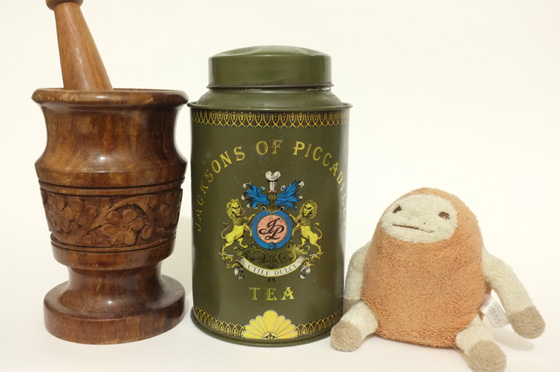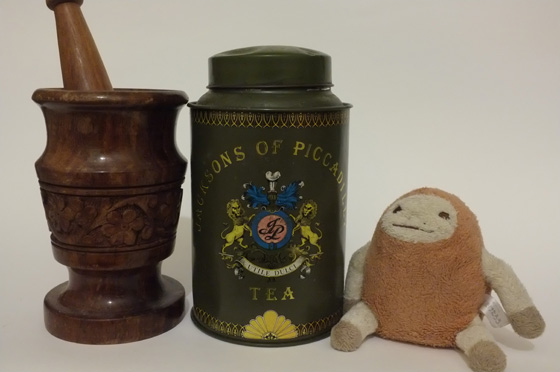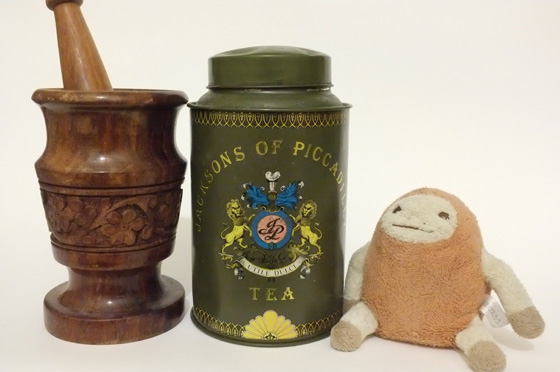Original URL: https://www.theregister.com/2011/04/29/review_fujifilm_finepix_x100_camera/
Fujifilm Finepix X100 APS-C camera
Old school values revisited
Posted in Personal Tech, 29th April 2011 07:00 GMT
Review The Fuji FinePix X100 is, of course, a camera for those with more money than sense. Just look at it. Finished in wildly ostentatious silver magnesium alloy with splashes of leather on the grip, the retro viewfinder styling and chunky shutter speed dial evoke the rangefinders of the 1960s and 1970s.
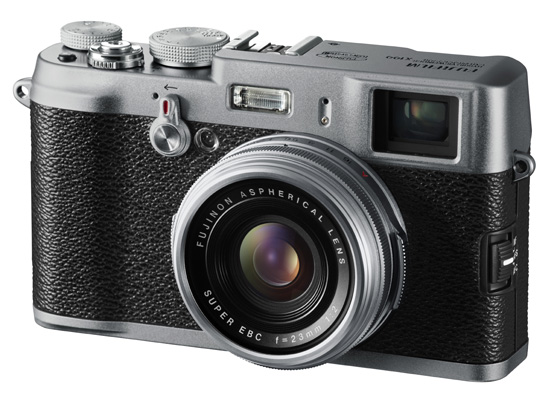
Grand design: Fujifilm's Finepix X100
Even the shutter release button has a screw-thread drilled into it to allow you to attach an old-style cable release. In these days of interchangeable lens, electronic viewfinder cameras, what possible appeal can a fixed-lens camera like this hold?
Surprisingly, the answer is: quite a lot. Lift it from its fussy, faux-satin-lined box and the X100’s 450g weight makes a strong impression. This may be, effectively, a £1000 compact camera, but it feels like every second of Fuji’s 77-year photographic expertise has gone into making it.
If the idea of manual shutter speeds and aperture sizes puts you off, this is a camera you’ll never really get along with. There is an automatic mode – set the shutter dial on the top and the aperture ring at the front to A – and most of the work will be done for you, but that’s hardly the most satisfying way of using the camera. For fans of manual modes, though, the X100 is an absolute joy.
Cameras such as the Canon G11 and Nikon P7000 may have manual modes, but they’re not as quick to use as this. You never need to glance at the menu when setting up an exposure, for instance: just click the dials around to the settings you need.
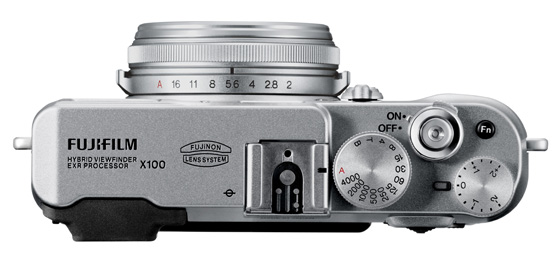
Dialling it in
The dials themselves feel expensive and assured, although the aperture ring isn’t mechanically linked to the lens itself, so you don’t get the satisfaction of hearing (and watching, for trainspotters) the aperture change size as you move the ring. Next to the shutter speed dial is a dedicated exposure compensation dial.
Field of view
The rest of the camera is logically laid out. A function button next to the shutter release is pre-set to bring up the ISO option menu, although it can alternatively be set to preview the depth of field or set the self-timer. The only problem with the controls is that the jog dial on the back – on my review sample, at least – was far too weedy. Put enough effort in to turn it and there’s a danger you’ll end up prompting a menu onto the screen. It’s problem similar to that of the Olympus E-PL2.
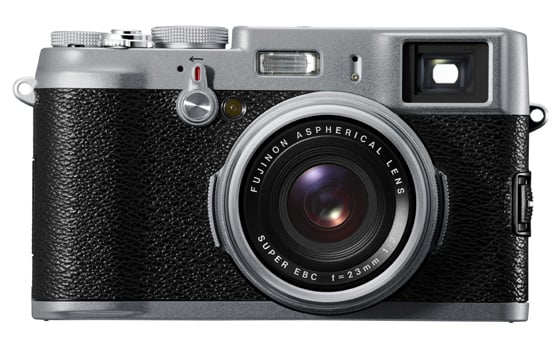
Both optical and electronic viewfinders are on-board along with the LCD panel option
The menu button in the middle of the jog dial is also almost flush with the wheel itself, making it difficult to press it precisely. These aren’t unique or unprecedented problems, but it’s annoying to see them on a camera that costs almost as much as a Nikon D300s.
The viewfinder has some interesting tricks up its sleeve. You can use it as a traditional optical viewfinder, in which case part of the frame is occupied by the top right of the lens and you’ll obviously suffer the effects of parallax distortion.
Moreover, the viewfinder only covers 90 per cent of the sensor’s field of view. Even so, you still get, an exposure meter and shot information. Push the lever on the front of the camera, and a mirror flicks across, giving you a miniature, 0.47in EVF (electronic viewfinder). This provides you with a view of precisely what the sensor sees.
The flexibility is useful, although my personal preference is to use the optical viewfinder, which feels faster. The alternative is to rely on the 2.8in screen on the back, which is handy for framing more pre-meditated shots. This panel consists of 460k pixels and has superb contrast. Blacks aren’t quite as deep as they are on the AMOLED displays championed by Samsung, but there’s still plenty of detail and colour.
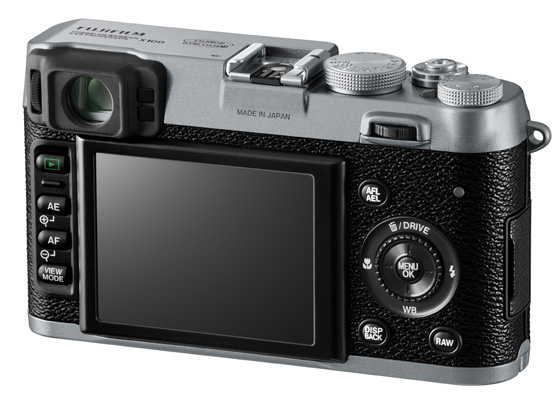
RAW shooting has its own dedicated button
Of course, all of this is meaningless if the X100 takes bad pictures, but ISO testing revealed surprising results. The sensor inside the X100 is a 23.6 x 15.8mm CMOS chip. It’s the same size sensor that you’ll find in most consumer DSLRs, so low noise seemed a reasonable expectation.
Sample Shots
Sample Shots
Film modes
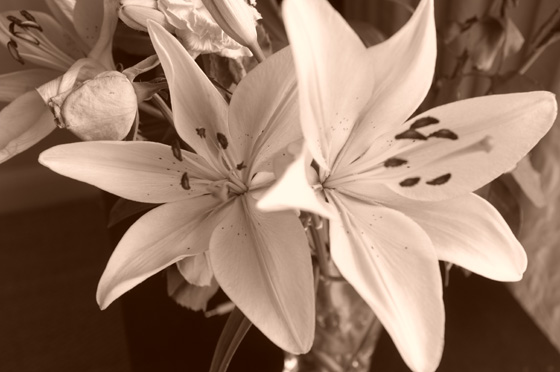
Sepia
ISO Tests
Prime mover
Indeed, there’s no meaningful distinction between ISO 100 and ISO 1600 when looking at the full image. Even zoomed in, a tiny amount of speckling is all you get. Push things further – and shoot with the X100’s topmost, expanded ISO setting of 12,800 – noise was tightly controlled, although the final image was relatively soft.
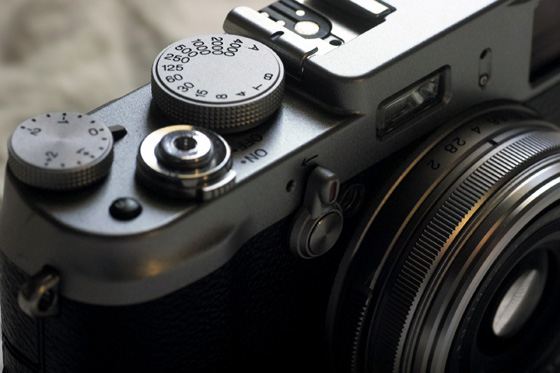
Threaded shutter release button allows cable accessories of old to be used.
It has to be said that it is disappointing that the lens can’t be changed. On a camera this expensive, the ability to use a reasonable telephoto or wide-angle lens would be appreciated. Still, if you’re going to be stuck with a single optic, it may as well be one as good as the 23mm, f/2 prime lens on the front of the X100.
There’s no barrel distortion to speak of, and it’s impressively sharp, even wide-open. The only trouble is the technical difficulty of getting sharp frames from such a huge aperture. The lack of zoom or interchangeability could even be seen as a good thing – the only way to change the composition of your shots is to move your feet, making the X100 perhaps the only camera on the market that forces photographers into good habits.
Performance, unfortunately, is very mixed. In normal use, shooting JPEGs, the X100 is handy. It starts in just over two seconds, and recovery time between shots is under a second, even in RAW mode. But, while the X100 claims a maximum continuous shooting speed of 5fps, and actually delivered slightly faster (5.6fps) against a stopwatch, this was followed by a digestion period of a little over ten seconds – not much good if things are unfolding in front of you.
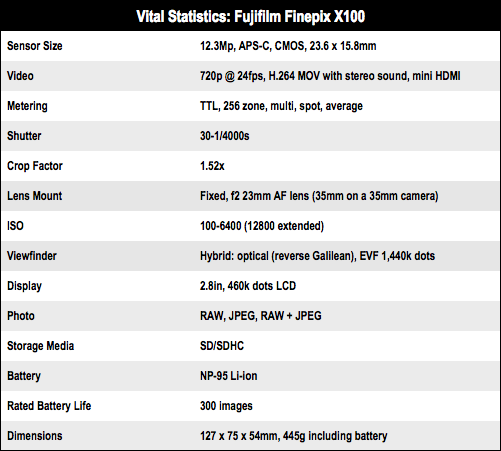
Compact case
RAW mode, predictably, is even worse. The speed doesn’t drop, but the buffer does, from 10 shots to eight, while the processing time jumps to around 20 seconds. These would be reasonably good figures for a mid-range compact, not a £1,000 camera.
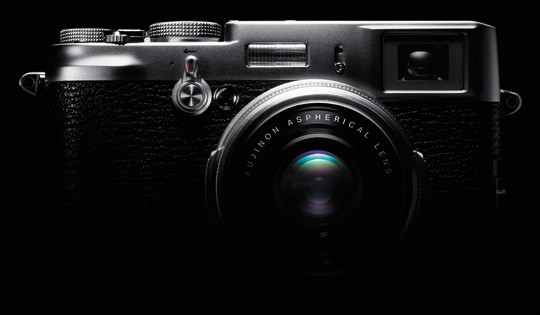
The retro layout will no doubt appeal to old school photographers unwilling to change their habits
Battery performance is more impressive though. Fuji claims 300 shots per charge, which was roughly borne out during testing. Expect battery life to go up if you rely on the optical viewfinder rather than either the EVF or monitor on the back.
The question is: who is the X100 for? Consumers will baulk at spending a grand on a camera; particularly when the likes of the Sony NEX-3 produces images which are almost as good for nearly £700, albeit at the cost of looks, build-quality and accessible manual modes. High-end users and professionals, however, will look for far better RAW performance and interchangeable lenses.
Fuji calls the X100 “the professional’s choice”, but with a lens catalogue numbering precisely zero it’s hard to see which category of professional the company might be talking about. Even professionals looking for a backup camera are more likely to spend a thousand pounds on something in the class of the Canon EOS 7D. Just about the only thing the X100 has going for it at this price is its size and weight: it’s about half as heavy as a semi-professional DSLR.
Verdict
The X100 is a great camera to use – fun, involving, and capable of very good images in all sorts of light. It’s well-constructed, and although the retro design won’t be to everyone’s taste, I love it. Finding a compact that forces you to engage with manual photography is a novelty that doesn’t wear off, and the result is a camera that’s intensely satisfying to use. But at a thousand pounds it’s next to impossible to recommend. ®
More Camera Reviews… |
||||
 Olympus Olympus
PEN E-PL2 |
 Panasonic Panasonic
Lumix DMC-G2 |
 Samsung Samsung
EX1 |
 Leica Leica
M9 |
 Sony Sony
NEX-5 |
